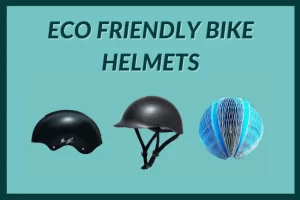Are helmets environmentally friendly?

Are Helmets Environmentally Friendly? Exploring the Eco Impact
The Importance of Helmets
Helmets play a crucial role in protecting individuals from head injuries, whether while cycling, motorcycling, or engaging in other activities with potential risks. Their primary purpose is to enhance safety and reduce the severity of head trauma in case of accidents. Are helmets environmentally friendly?
The Manufacturing Process
When evaluating the environmental impact of helmets, it’s essential to consider their entire lifecycle, starting with the manufacturing process. Most helmets are made from a combination of plastic, foam, and other materials. The production of these components often involves the extraction of raw materials, energy-intensive processes, and transportation.

Materials Used
The materials used in helmets, such as polycarbonate plastic and expanded polystyrene (EPS) foam, are derived from petrochemicals. The extraction of these resources can lead to habitat disruption and carbon emissions. Additionally, the manufacturing of plastics is energy-intensive and generates pollutants.
Energy Consumption
The production of helmets requires significant energy inputs, contributing to greenhouse gas emissions. From the extraction of raw materials to the molding and assembly processes, energy is consumed at each step. Manufacturers are increasingly exploring renewable energy sources to mitigate this impact.
Longevity and Disposal
The durability of helmets is a double-edged sword from an environmental perspective. On one hand, their longevity means fewer helmets need to be produced and purchased over time. On the other hand, when helmets do reach the end of their useful life, the disposal process becomes a concern.
Extended Use
Investing in a high-quality helmet and using it for its intended lifespan can significantly reduce the overall environmental impact. Regular maintenance and proper care can extend a helmet’s useful life, making it a more sustainable choice.

Recycling and Waste
Helmet disposal poses a challenge due to the combination of materials used. Separating and recycling materials like plastic, foam, and metal components requires specialized processes. Manufacturers are researching ways to make helmets more easily recyclable and exploring innovative materials.
Innovations in Eco-Friendly Helmets
Recognizing the environmental concerns, some companies are actively working to create more sustainable helmet options.
Biodegradable Materials
Researchers are investigating biodegradable alternatives to traditional helmet materials. These materials break down more naturally over time, reducing the long-term environmental impact. For 100% recyclable helmets read here.
Modular Design
Some helmets are designed with a modular approach, allowing for the replacement of specific parts instead of the entire helmet. This approach can extend a helmet’s lifespan and reduce waste.
Recycling Initiatives
Companies are partnering with recycling facilities to create collection and recycling programs for old helmets. This approach aims to divert helmets from landfills and promote responsible disposal.
Conclusion
The question of whether helmets are environmentally friendly has a nuanced answer. While the production and disposal of helmets do have an environmental impact, their role in preventing head injuries is essential for individual safety. By choosing high-quality helmets, using them for their intended lifespan, and supporting companies investing in sustainable practices, we can strike a balance between safety and environmental responsibility.
